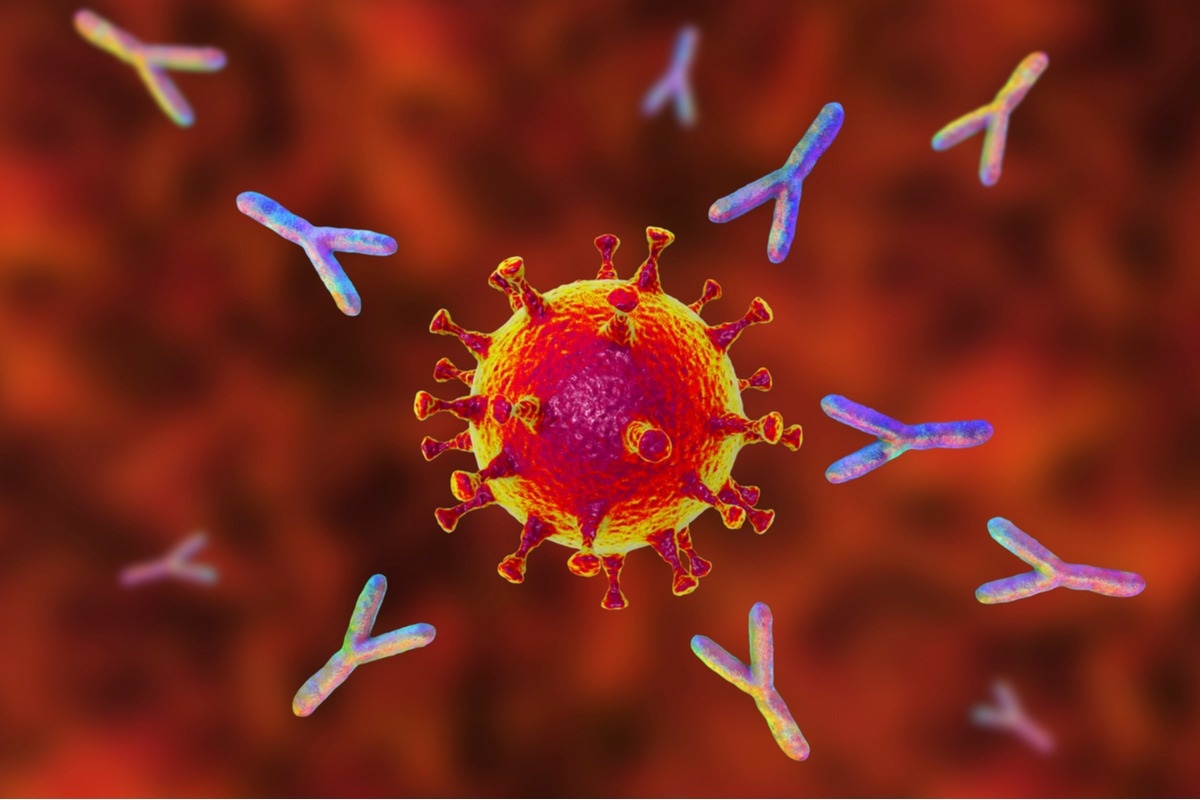A recent study posted to the medRxiv* preprint server discovered antibody footprints strongly correlated with immunopathology of severe acute respiratory syndrome coronavirus 2 (SARS-CoV-2) infection using a new B cell epitope identification approach. They also suggested that SARS-CoV-2's membrane protein was a pathological antigen independent of T cells.
 Study: Structural epitope profiling identifies antibodies associated with critical COVID-19 and long COVID. Image Credit: Kateryna Kon/Shutterstock.com
Study: Structural epitope profiling identifies antibodies associated with critical COVID-19 and long COVID. Image Credit: Kateryna Kon/Shutterstock.com

 *Important notice: medRxiv publishes preliminary scientific reports that are not peer-reviewed and, therefore, should not be regarded as conclusive, guide clinical practice/health-related behavior, or treated as established information.
*Important notice: medRxiv publishes preliminary scientific reports that are not peer-reviewed and, therefore, should not be regarded as conclusive, guide clinical practice/health-related behavior, or treated as established information.
Background
Antibodies can have neutral, beneficial, or harmful impacts. Hence, solving an antibody repertoire to its target epitopes might help to understand the variation in vulnerability to infectious illness. Nevertheless, the three-dimensional (3D) characteristic of antibody-epitope contacts constrains the finding of significant targets.
Due to their molecular simplicity, so-called linear B cell epitopes, with a continuous peptide fragment able to attach an antibody, can be identified utilizing high-throughput techniques. Nonetheless, these represent a small portion of the total repertoire, with the majority believed to represent ineffective antibodies that bind to only broken-down proteins instead of intact proteins exposed to active pathogens.
In silico technologies is a substitute for experimental linear epitope finding approaches since they forecast where discontinuous epitopes would be located within a protein's structure. Yet, none of these techniques have made an effort to determine whether a minimally adequate set of residues may recapitulate projected epitopes.
About the study
In the present study, the scientists outlined and experimentally verified a computational technique and synthetic biology pathway for discovering structurally stable and functionally significant epitopes from the SARS-CoV-2 proteome.
The team established a computationally competent thermodynamic approach for estimating the regions of a protein that can generate stable peptides, i.e., those harboring 10 to 100 amino acids. The goal was to find sequences that, when produced as peptides, most probably adopt identical 3D conformations to their context in the full-length protein.
The current approach tried to enrich putative peptides for epitopes that the authors believe have a fair chance of being immunodominant and functionally significant because they were exposed to the complete proteins and were probable to remain in debris. The efficiency of the experiment was increased by avoiding the synthesis of disordered peptides and removing stable peptides not adopting their native structure.
Further, the SARS-CoV-2 proteome was subjected to the researchers' newly developed method, and the efforts were verified by profiling the antibody repertoire in independent clinical groups enlisted within the United Kingdom (UK) National Health Service (NHS). Since the severity of the infection varies and antibodies were both a critical predictor of immunity against the virus and a source of harm, SARS-CoV-2 was a promising option for discovering both beneficial and detrimental targets.
Results
The scientists discovered multiple epitopes bearing clinically and immunologically significant correlations from the SARS-CoV-2 proteome via computational methods and synthetic biology fusion protein pathways developed in the study. They found that a major predictor of acute immunopathology of CoV disease 2019 (COVID-19) was a sustained immunoglobulin M (IgM) reaction with minimal IgA/IgG response to an epitope at the membrane protein's extra-virion N-terminus.
One of the strong correlations of severe COVID-19 identified to date, the connection reported for M1 IgM in the study, was more robust than age and was unrelated to either age or sex. Anti-interferon antibodies and severe COVID-19 tend to be present in patients who have not previously experienced severe viral infections. The team hypothesizes that M1 TI responses could play a role in the initial cytokine environment and immune reaction that illustrates the SARS-CoV-2 specific collapse of tolerance during severe illness, including in people with other pre-existing presumably autoreactive lymphocytes, like those antagonistic to type 1 interferon.
Finally, the researchers discovered that a small, varied, yet well-phenotyped long-COVID cohort included around a third of subjects with persistent IgM reactions to the membrane protein antigen. Sustained M1 IgM was distinctive in 11%, i.e., 22 of 200, of blood donors in the two to six months following infection, while IgM seroreversion had already occurred to other epitopes. At an average of 420 days following SARS-CoV-2 infection, 30%, i.e., 9 of 30, of those with long-COVID showed evidence of long-term persistence.
Conclusions
On the whole, the computational technique depicted in the current research intends to significantly increase the effectiveness of discovering functionally significant epitopes by initially factoring in the peptides' structural stability. The authors believed the presently illustrated method might have a broad range of applications, such as designing peptide vaccines.
The team discovered trends of antibodies linked with immunopathology, consisting of a non-isotype shifting IgM reaction towards a membrane protein epitope robustly correlated with severe COVID-19 from the SARS-CoV-2 proteome. They suggested that the process was T-independent B cell stimulation and found that people with long-COVID, especially those who suffer from depression and fatigue, had responses that continued for more than a year. The scientists noted that the present findings could impact the continuing clinical and public health reactions to the COVID-19 pandemic.

 *Important notice: medRxiv publishes preliminary scientific reports that are not peer-reviewed and, therefore, should not be regarded as conclusive, guide clinical practice/health-related behavior, or treated as established information.
*Important notice: medRxiv publishes preliminary scientific reports that are not peer-reviewed and, therefore, should not be regarded as conclusive, guide clinical practice/health-related behavior, or treated as established information.